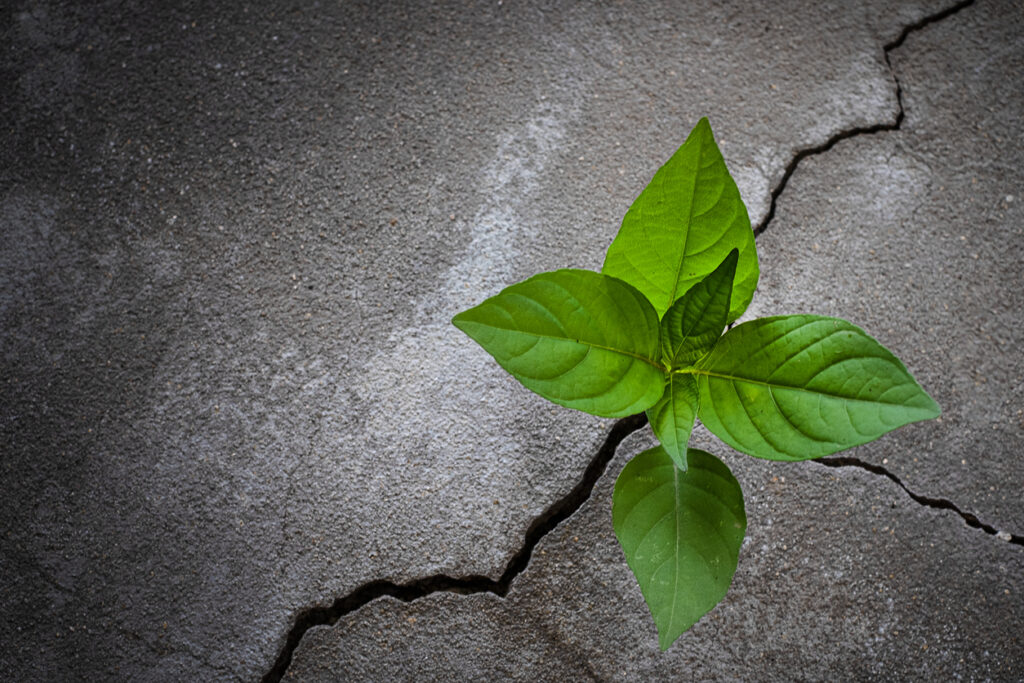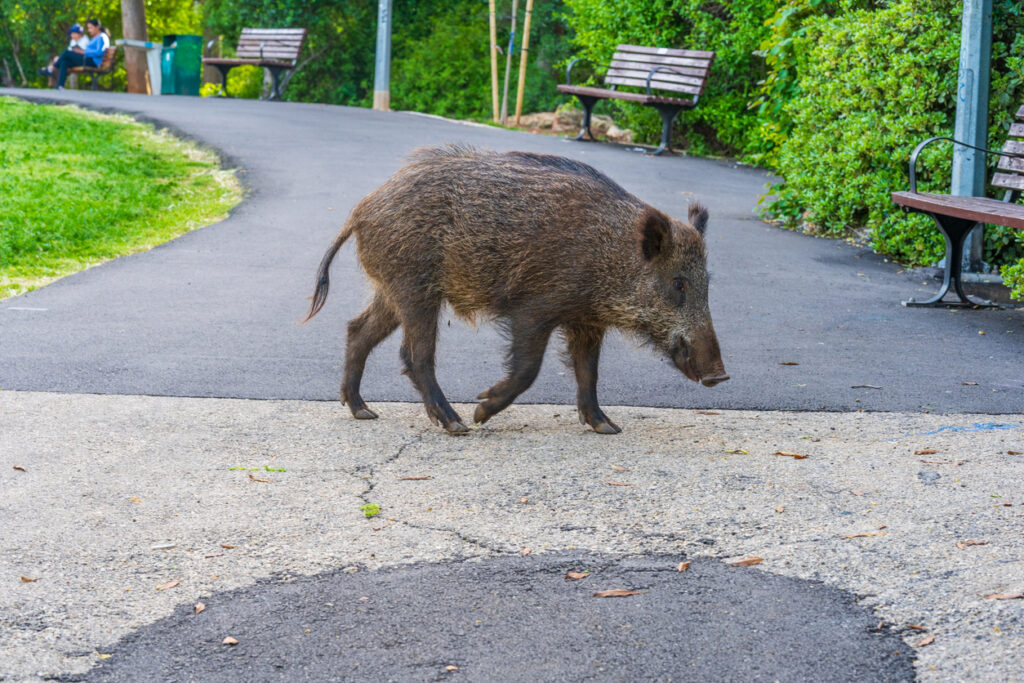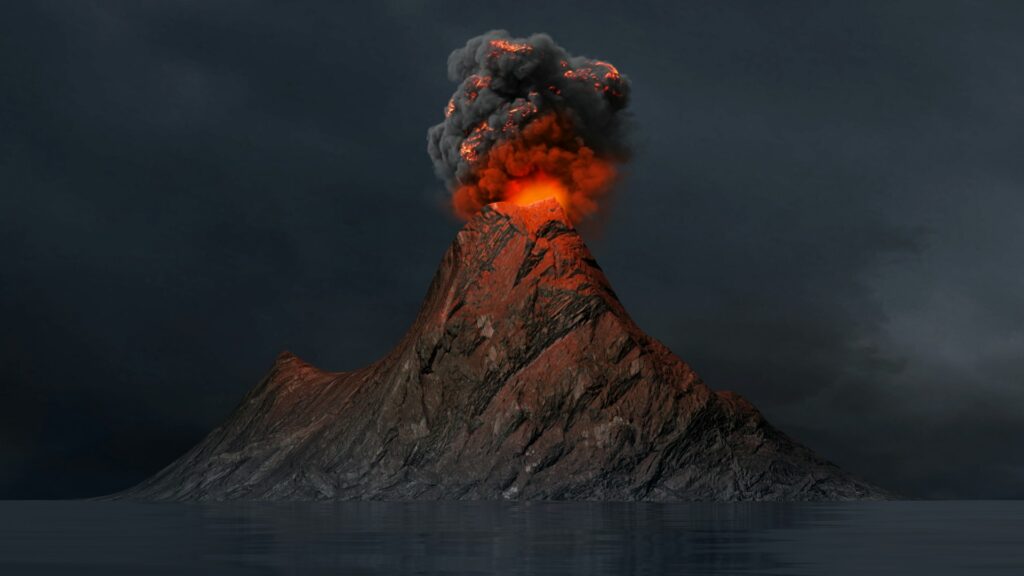
We’ve built cities, rerouted rivers, and sent rovers to Mars—but every so often, nature casually reminds us who’s really running the show. It’s not always in the form of big, dramatic events, either. Sometimes it’s a subtle shift, a wild comeback, or a biological move so clever that it makes human effort look like guesswork. Here are 13 moments that prove nature doesn’t just tolerate us—it outpaces, outsmarts, and occasionally humbles us in ways we never quite see coming.
1. When plants broke through concrete
It doesn’t matter how many times we pave over things—nature has a way of taking it back. Weeds pushing through pavements, trees uprooting pavements, or moss slowly blanketing entire buildings. It doesn’t take much time for nature to reclaim what we thought was ours. It’s a subtle, relentless reminder that concrete isn’t permanent. We think we’re creating something solid, but nature doesn’t need permission to grow. It just finds a crack, and goes for it.
2. When Mount St. Helens bounced back faster than expected
After the 1980 eruption, scientists assumed the area around Mount St. Helens would take centuries to recover. Entire forests were flattened, and the landscape looked like the surface of the moon. But nature had other plans. Within just a few years, wildflowers started blooming, birds returned, and small mammals moved back in. Turns out, life doesn’t wait for our timelines—it works on its own, often much faster than we expect when left alone.
3. When animals used our cities better than we do
Foxes, raccoons, gulls, deer—you name it. Urban wildlife has figured out how to navigate traffic, scavenge bins, and even use public transport systems in some places. Some pigeons have learned to use pedestrian crossings. Crows drop nuts on roads, so cars can crack them open.
We think we’ve engineered spaces for people, but animals have adapted to use our tools better than we expected. They’re not just surviving in cities—they’re thriving. Often right under our noses.

4. When wild boars overran cities during lockdown
During the pandemic, when people stayed indoors, wild animals wandered freely into places they’d usually avoid. In cities across Europe and Asia, wild boars walked the streets like they owned them, rummaging through parks and traffic islands. It was a surreal reminder that the line between “our space” and “theirs” is thinner than we like to believe. The moment we step back, nature isn’t shy about moving in and taking up space we thought only belonged to us.
5. When fungi started digesting plastic
While we scramble to solve the plastic pollution crisis, certain fungi and bacteria have already figured out how to break it down. In some labs and landfills, researchers have discovered species that can digest plastic, including polyurethane and PET, in weeks or months. It’s a reminder that even the messes we think are impossible might already have a natural solution. We just haven’t caught up to nature’s playbook yet.
6. When a tree grew inside a stop sign
There are cases where seeds land in tiny cracks of street signs or traffic posts—and grow. Trees, fig saplings, or vines slowly work their way through metal, swallowing the structure whole over time. It doesn’t even look real when you see it, but it happens more than you’d think. It’s nature’s version of graffiti: a silent takeover, creeping up and reminding us that even the sharpest metal edges and engineered signs can be softened and consumed by growth.
7. When Yellowstone wolves changed the shape of rivers
In 1995, when wolves were reintroduced to Yellowstone, no one expected that it would affect the rivers. But their presence controlled deer populations, which gave overgrazed plants a chance to grow again. That, in turn, stabilised riverbanks and changed the flow of water.
This phenomenon, called a trophic cascade, shows just how deep and interconnected ecosystems really are. One predator changed everything. Not with bulldozers or dams, but with balance.

8. When volcanoes created new land
Every so often, a volcanic eruption doesn’t just destroy, it builds. New islands like Surtsey off the coast of Iceland or Nishinoshima in Japan literally rose out of the sea thanks to volcanic activity. Within years, life starts moving in—plants, birds, insects, like they’ve been waiting for the invitation. It’s a dramatic reminder that destruction isn’t always the end in nature. Sometimes it’s just the setup for something new to emerge, no matter how apocalyptic it looks at first.
9. When whales returned to polluted rivers
In 2022, a beluga whale was spotted in France’s River Seine. Other times, whales have wandered into heavily trafficked or industrial areas, clearly surviving where we’d assume they couldn’t. It’s equal parts miraculous and uncomfortable. It’s proof that wildlife is still willing to show up, even in the spaces we’ve ruined. And maybe a quiet challenge for us to meet them halfway and make those places more liveable again.
10. When trees outlived empires
There are trees alive today that have been standing since before the Roman Empire fell. The Methuselah bristlecone pine is over 4,800 years old. Some olive trees in the Mediterranean are still producing fruit after 2,000 years. While human civilisations rise, conquer, fall, and fade, these trees have just been… growing. Silently. Slowly. As if to say, “You’re not the first, and you won’t be the last.”
11. When nature swallowed abandoned places whole
Old theme parks, mining towns, or empty holiday resorts left behind by humans don’t stay lifeless for long. Vines crawl through windows, trees sprout through floors, and animals move in like it’s theirs. Because now, it is. What we see as ruins, nature sees as new real estate. Abandonment isn’t the end, it’s an invitation. And nature is always ready to RSVP.
12. When hurricanes erased human plans
Every year, storms hit coastlines and wipe out months—or years—of human development. No matter how advanced our forecasting or engineering becomes, hurricanes still have the upper hand. Roads disappear. Buildings crumble. Shorelines get redrawn. It’s not about punishment. It’s about scale. We’re working in months and budgets. Nature is working in geological time, reshaping continents and ecosystems without needing our approval.
13. When the aurora lit up places it shouldn’t
In 2024, the aurora borealis was seen dancing across skies as far south as Spain and Florida. Solar storms sent waves of charged particles into Earth’s atmosphere, creating surreal light shows way outside their normal zones. We like to think we understand the rules of the natural world—but every so often, it reminds us there’s still mystery and power in the sky above. Nature doesn’t follow our forecasts—it rewrites them.